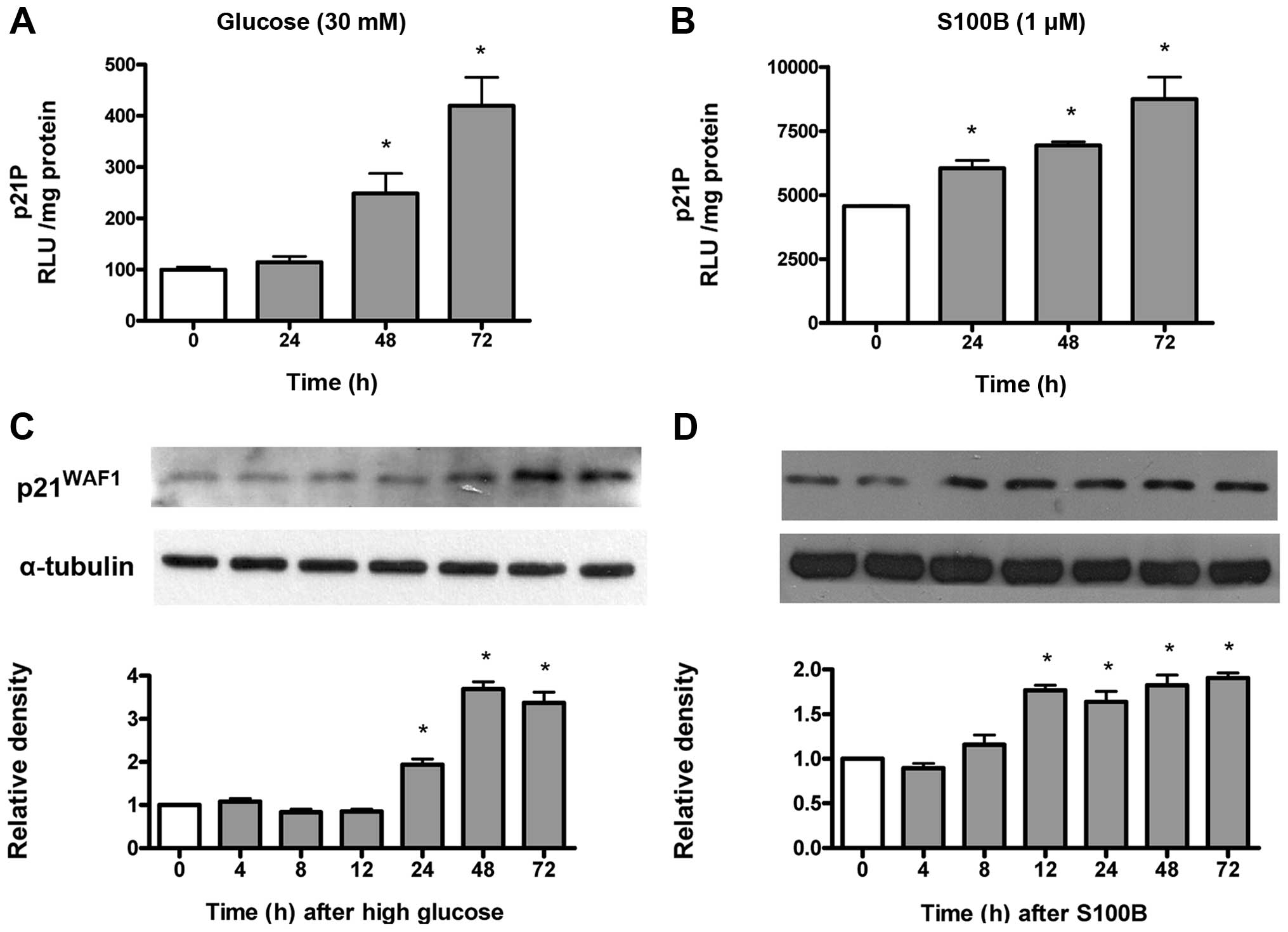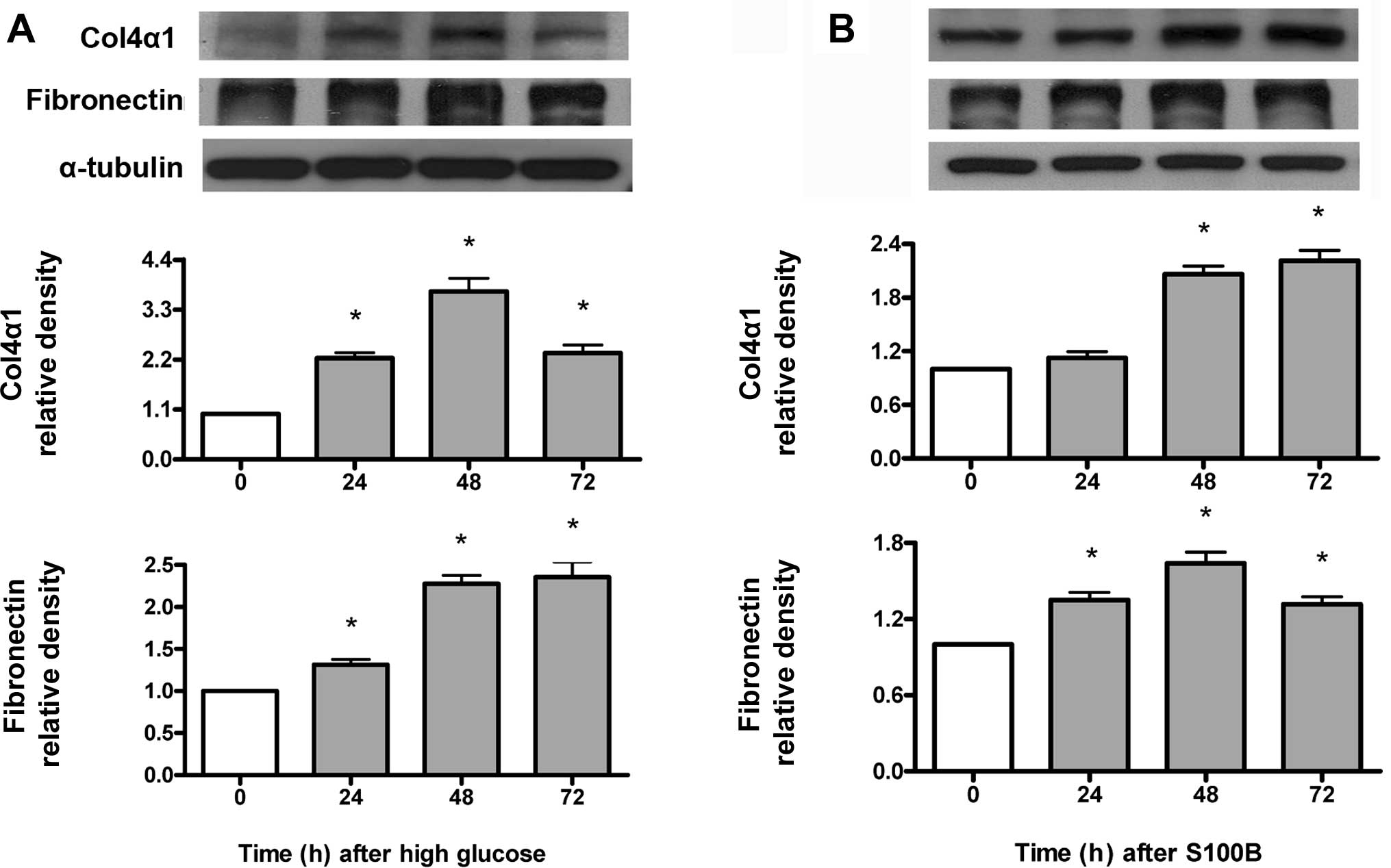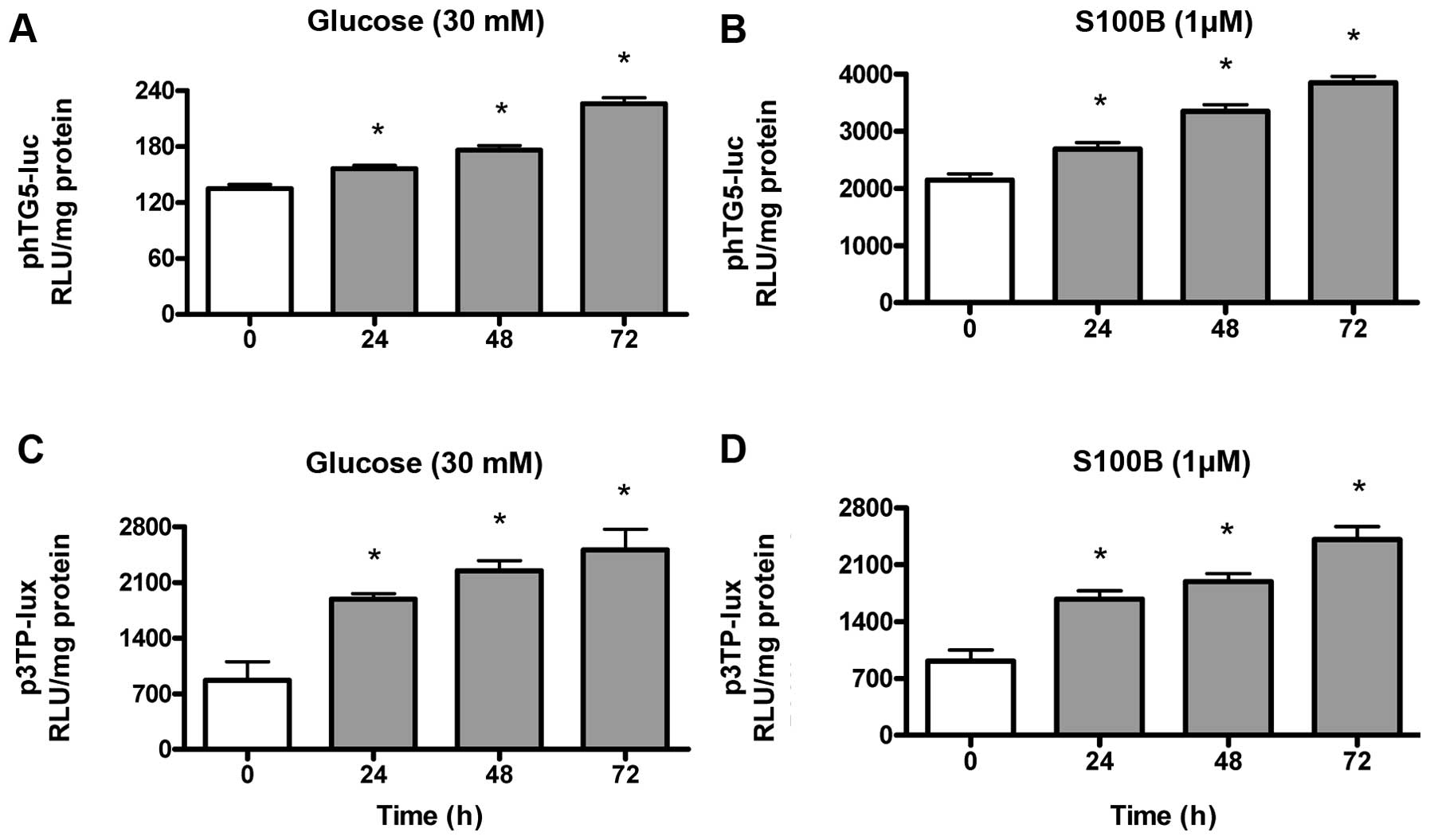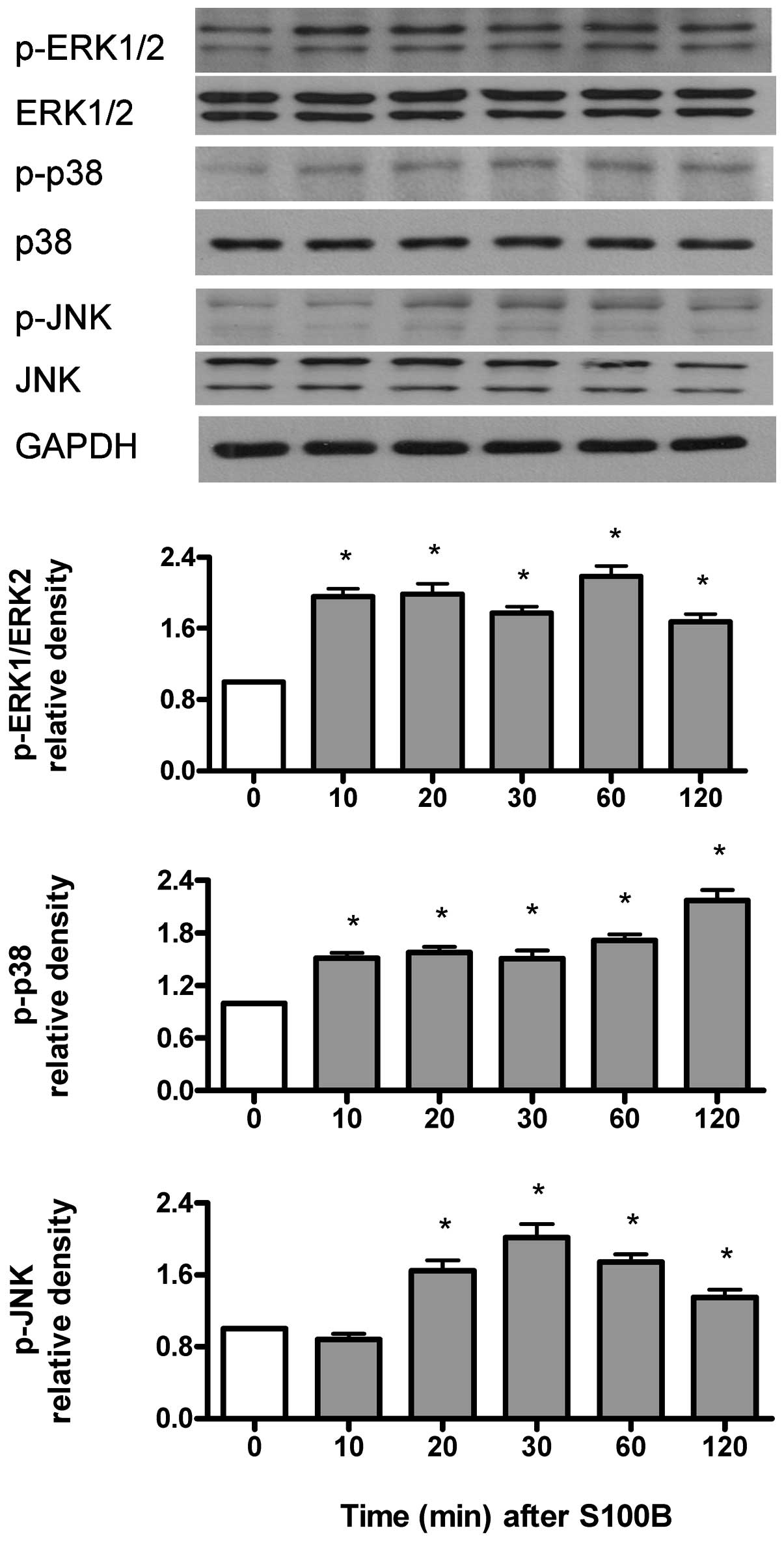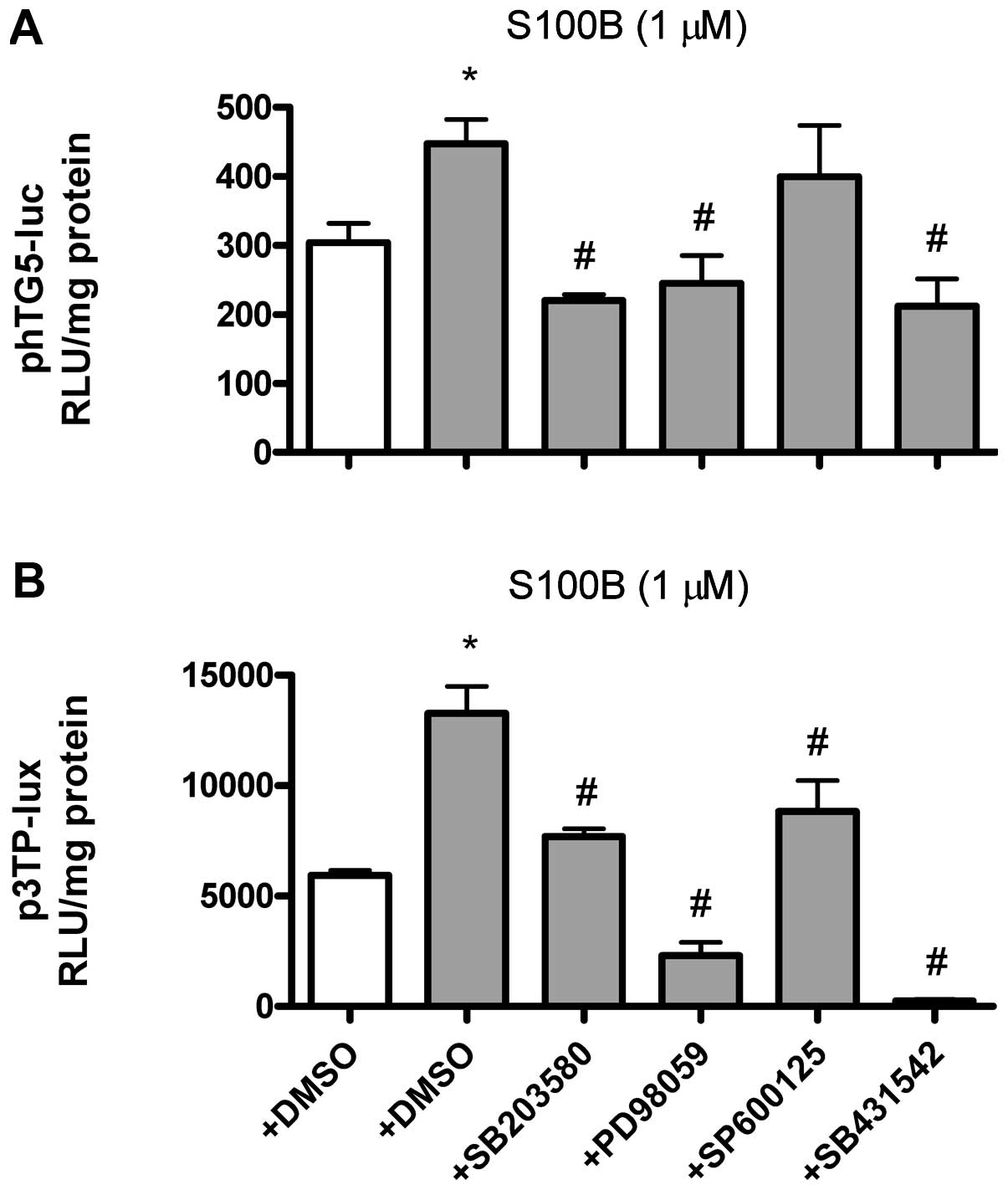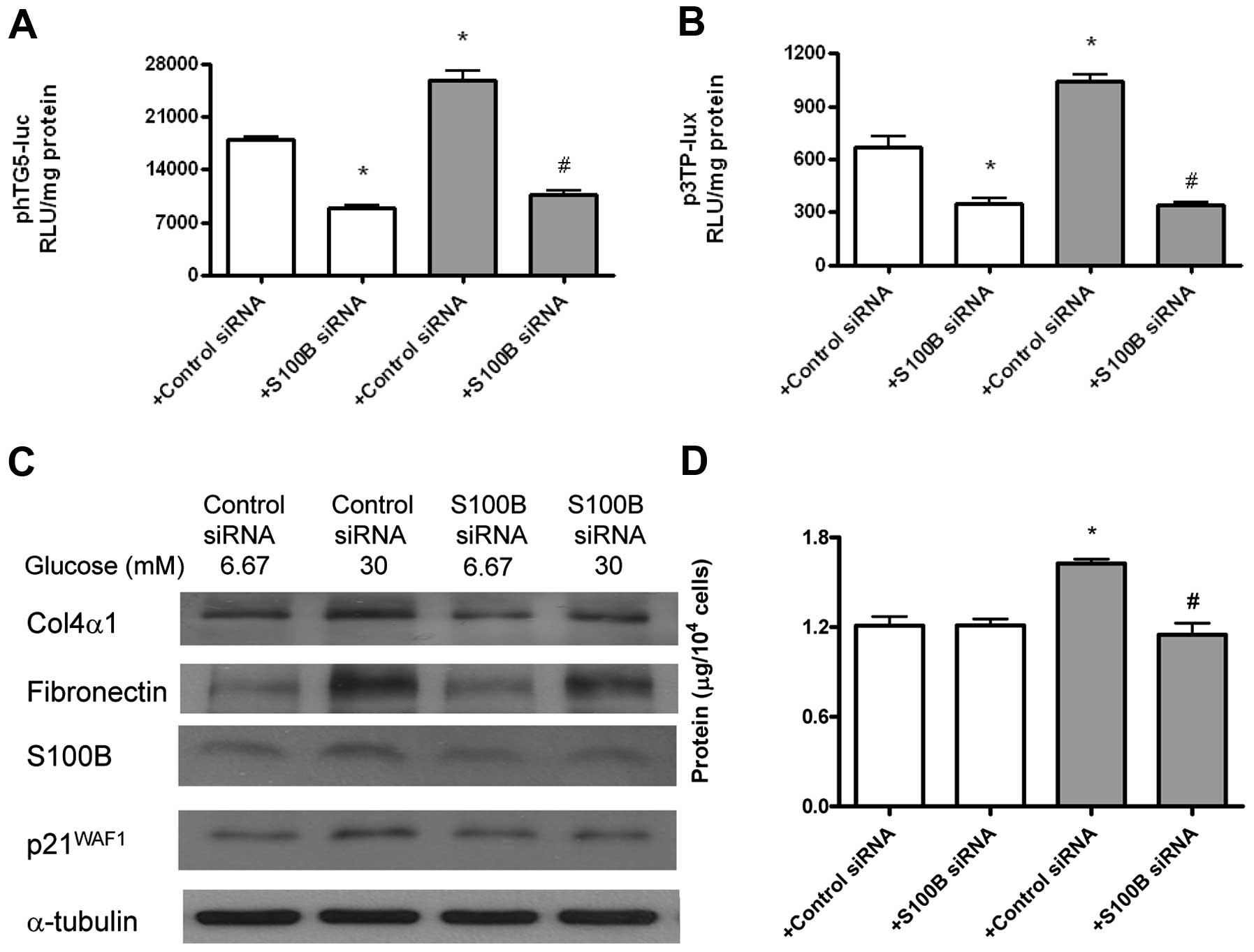|
1
|
Gnudi L: Cellular and molecular mechanisms
of diabetic glomerulopathy. Nephrol Dial Transplant. 27:2642–2649.
2012. View Article : Google Scholar : PubMed/NCBI
|
|
2
|
Forbes JM and Cooper ME: Glycation in
diabetic nephropathy. Amino Acids. 42:1185–1192. 2012. View Article : Google Scholar
|
|
3
|
Ramasamy R, Yan SF and Schmidt AM: The
diverse ligand repertoire of the receptor for advanced glycation
endproducts and pathways to the complications of diabetes. Vasc
Pharmacol. 57:160–167. 2012. View Article : Google Scholar
|
|
4
|
Loeffler I and Wolf G: Transforming growth
factor‑beta and the progression of renal disease. Nephrol Dial
Transplant. 29(Suppl 1): i37–i45. 2014. View Article : Google Scholar
|
|
5
|
Xie J, Méndez JD, Méndez-Valenzuela V and
Aguilar-Hernández MM: Cellular signalling of the receptor for
advanced glycation end products (RAGE). Cell Signal. 25:2185–2197.
2013. View Article : Google Scholar : PubMed/NCBI
|
|
6
|
Meek RL, LeBoeuf RC, Saha SA, et al:
Glomerular cell death and inflammation with high-protein diet and
diabetes. Nephrol Dial Transplant. 28:1711–1720. 2013. View Article : Google Scholar : PubMed/NCBI
|
|
7
|
Reddy MA, Sumanth P, Lanting L, et al:
Losartan reverses permissive epigenetic changes in renal glomeruli
of diabetic db/db mice. Kidney Int. In press. 85:362–373. 2013.
View Article : Google Scholar : PubMed/NCBI
|
|
8
|
Forbes JM and Cooper ME: Mechanisms of
diabetic complications. Physiol Rev. 93:137–188. 2013. View Article : Google Scholar : PubMed/NCBI
|
|
9
|
Wolf G: Cell cycle regulation in diabetic
nephropathy. Kidney Int. 58:S59–S66. 2000. View Article : Google Scholar
|
|
10
|
Kuan CJ, al-Douahji M and Shankland SJ:
The cyclin kinase inhibitor p21WAF1, CIP1 is increased in
experimental diabetic nephropathy: potential role in glomerular
hypertrophy. J Am Soc Nephrol. 9:986–993. 1998.PubMed/NCBI
|
|
11
|
Al-Douahji M, Brugarolas J, Brown PA,
Stehman-Breen CO, Alpers CE and Shankland SJ: The cyclin kinase
inhibitor p21WAF1/CIP1 is required for glomerular hypertrophy in
experimental diabetic nephropathy. Kidney Int. 56:1691–1699. 1999.
View Article : Google Scholar : PubMed/NCBI
|
|
12
|
Leclerc E, Fritz G, Vetter SW and Heizmann
C: Binding of S100 proteins to RAGE: an update. Biochim Biophys
Acta. 1793:993–1007. 2009. View Article : Google Scholar : PubMed/NCBI
|
|
13
|
Zimmer DB, Chessher J, Wilson GL and
Zimmer WE: S100A1 and S100B expression and target proteins in type
I diabetes. Endocrinol. 138:5176–5183. 1997.
|
|
14
|
Jung DH, Kim YS and Kim JS: KIOM-79
prevents S100b-induced TGF-beta1 and fibronectin expression in
mouse mesangial cells. J Ethnopharmacol. 125:374–379. 2009.
View Article : Google Scholar : PubMed/NCBI
|
|
15
|
Jung DH, Kim YS, Kim NH, Lee J, Jang DS
and Kim JS: Extract of Cassiae Semen and its major compound inhibit
S100b-induced TGF-beta1 and fibronectin expression in mouse
glomerular mesangial cells. Eur J Pharmacol. 641:7–14. 2010.
View Article : Google Scholar : PubMed/NCBI
|
|
16
|
Datto MB, Yu Y and Wang XF: Functional
analysis of the transforming growth factor beta responsive elements
in the WAF1/Cip1/p21 promoter. J Biol Chem. 270:28623–28628. 1995.
View Article : Google Scholar : PubMed/NCBI
|
|
17
|
Michelson S, Alcami J, Kim SJ, et al:
Human cytomegalovirus infection induces transcription and secretion
of transforming growth factor beta 1. J Virol. 68:5730–5737.
1994.PubMed/NCBI
|
|
18
|
Wrana JL, Attisano L, Cárcamo J, et al:
TGF beta signals through a heteromeric protein kinase receptor
complex. Cell. 71:1003–1014. 1992. View Article : Google Scholar : PubMed/NCBI
|
|
19
|
Baelde HJ, Eikmans M, Doran PP, Lappin DW,
de Heer E and Bruijn JA: Gene expression profiling in glomeruli
from human kidneys with diabetic nephropathy. Am J Kidney Dis.
43:636–650. 2004. View Article : Google Scholar : PubMed/NCBI
|
|
20
|
Langer WJ, Devish K, Carmines PK and Lane
PH: Prepubertal onset of diabetes prevents expression of renal
cortical connective tissue growth factor. Pediatr Nephrol.
23:275–283. 2008. View Article : Google Scholar
|
|
21
|
Barrett T, Wilhite SE, Ledoux P, et al:
NCBI GEO: archive for functional genomics data sets-update. Nucleic
Acids Res. 41:D991–D995. 2013. View Article : Google Scholar
|
|
22
|
Donato R, Sorci G, Riuzzi F, et al:
S100B’s double life: intracellular regulator and extracellular
signal. Biochim Biophys Acta. 1793:1008–1022. 2009. View Article : Google Scholar
|
|
23
|
Kim SJ, Angel P, Lafyatis R, et al:
Autoinduction of transforming growth factor beta 1 is mediated by
the AP-1 complex. Mol Cell Biol. 10:1492–1497. 1990.PubMed/NCBI
|
|
24
|
Isono M, Cruz MC, Chen S, Hong SW and
Ziyadeh FN: Extracellular signal-regulated kinase mediates
stimulation of TGF-beta1 and matrix by high glucose in mesangial
cells. J Am Soc Nephrol. 11:2222–2230. 2000.PubMed/NCBI
|
|
25
|
Burt DJ, Gruden G, Thomas SM, et al: P38
mitogen-activated protein kinase mediates hexosamine-induced
TGFbeta1 mRNA expression in human mesangial cells. Diabetologia.
46:531–537. 2003.PubMed/NCBI
|
|
26
|
Mu Y, Gudey SK and Landstrom M: Non-Smad
signaling pathways. Cell Tissue Res. 347:11–20. 2012. View Article : Google Scholar
|




